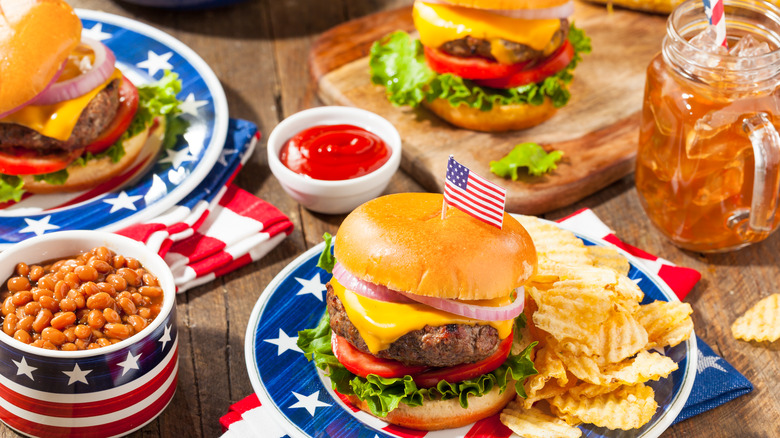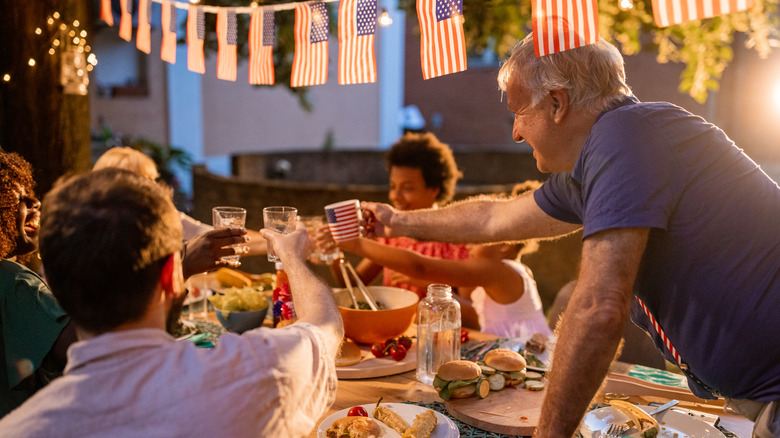How Barbecues Became An Important Part Of The 4th Of July
Flags, fireworks, and fired-up grills — whenever the 4th of July rolls around, chances are you'll find most Americans marking the occasion with all of the above. And while star-spangled banners and "rockets' red glare" are both obvious markers of an Independence Day celebration, you may be wondering how barbecues became an equally patriotic tradition that's by now practically synonymous with the holiday.
As it turns out, Americans had been gathering around fire pits to smoke their meats even before the nation's founding. The word "barbecue," in fact, originates from "barbacoa," a term used by the Taino tribe of the Caribbean to describe the act of grilling on a wooden platform. According to historical accounts, colonists in Virginia adopted the practice as early as the 1600s, inspired, too, by the cooking methods of the local Powhatan peoples. In the 1760s, George Washington himself enjoyed an "all-night" barbecue in Virginia.
But how did it become a 4th of July tradition? Well, the art of the barbecue, and the celebratory atmosphere that comes with it, spread throughout the early 1800s, particularly across the southern United States. Following the revolution, Southern political leaders held rallies to celebrate Independence Day, drawing crowds with the cookouts. These celebrations typically involved processions led by local militias, a reading of the Declaration of Independence, and finally, wood-fired feasts for all members of the community to enjoy. Festivities driven by good food, friends, and national pride became an annual occurrence.
The food served at early barbecues
These days, we mostly associate barbecues with meat dishes like hamburgers and hot dogs, along with vegetables, summer fruits, and side dishes like potato salad. Indeed, the menu lineup hasn't changed much in a few hundred years.
Early July 4th festivities featured food donated by community members and local farmers, including pigs, chickens, goats, and cows, which might be roasted whole over wood-fired pits in the ground. The first Independence Day barbecue in Kansas City even featured a whole buffalo. Meanwhile, familiar side dishes included cucumbers, watermelon, and bread.
And lest we forget the boozy beverages which now accompany the backyard meals — after all, what's a barbecue without beer (or red, white, and blue cocktails)? The early citizens of the United States had that part covered as well, with original 4th of July celebrations incorporating a tradition of 13 toasts, raising a glass for each of the colonies and honoring patriotic themes from democracy to famous revolutionary battles — even members of Congress partook in the practice. And it's likely that, similar to modern festivities, plenty of ale was involved.
This Independence Day, feel free to raise a glass and toast to tradition while enjoying grilled meats. After all, that's what our forefathers did.

